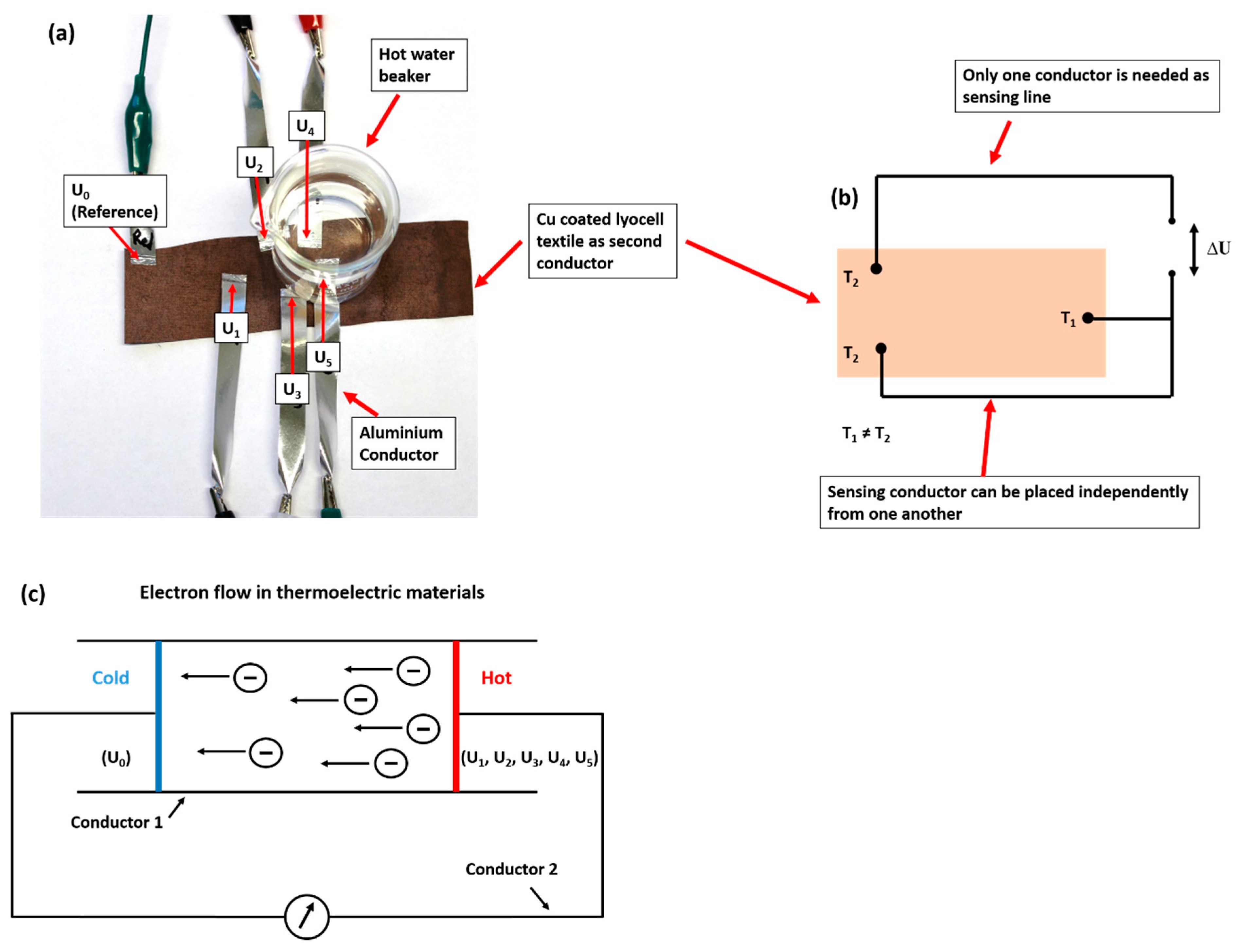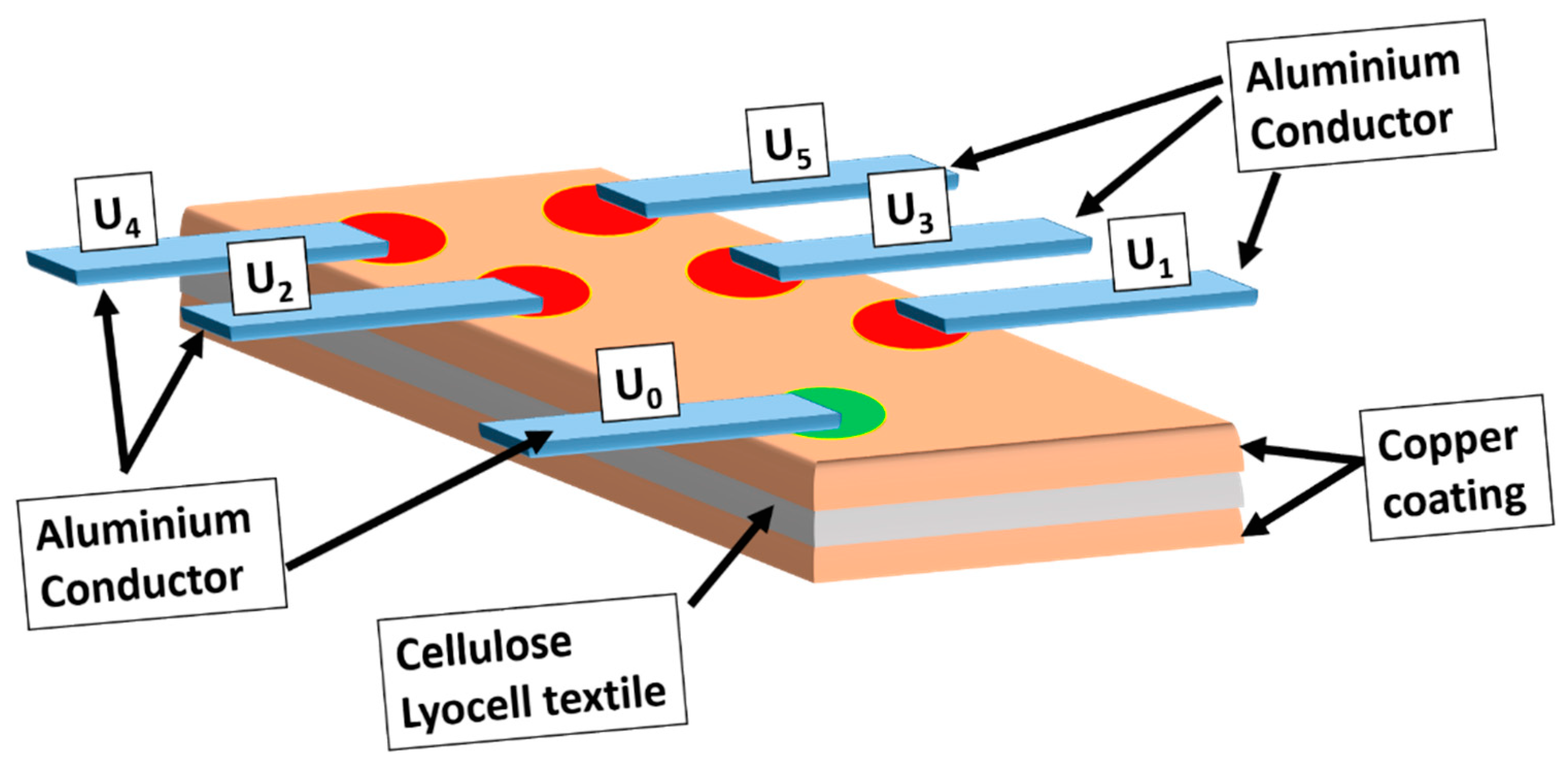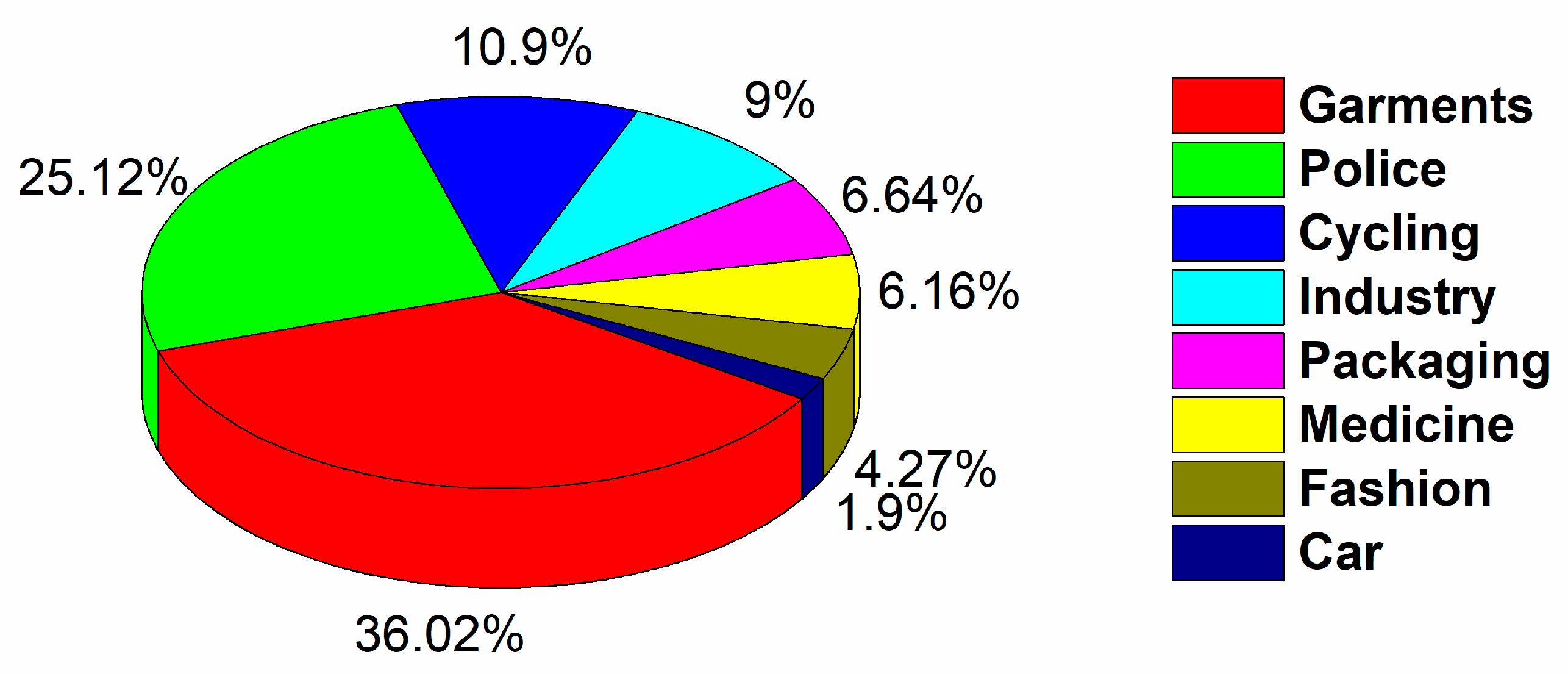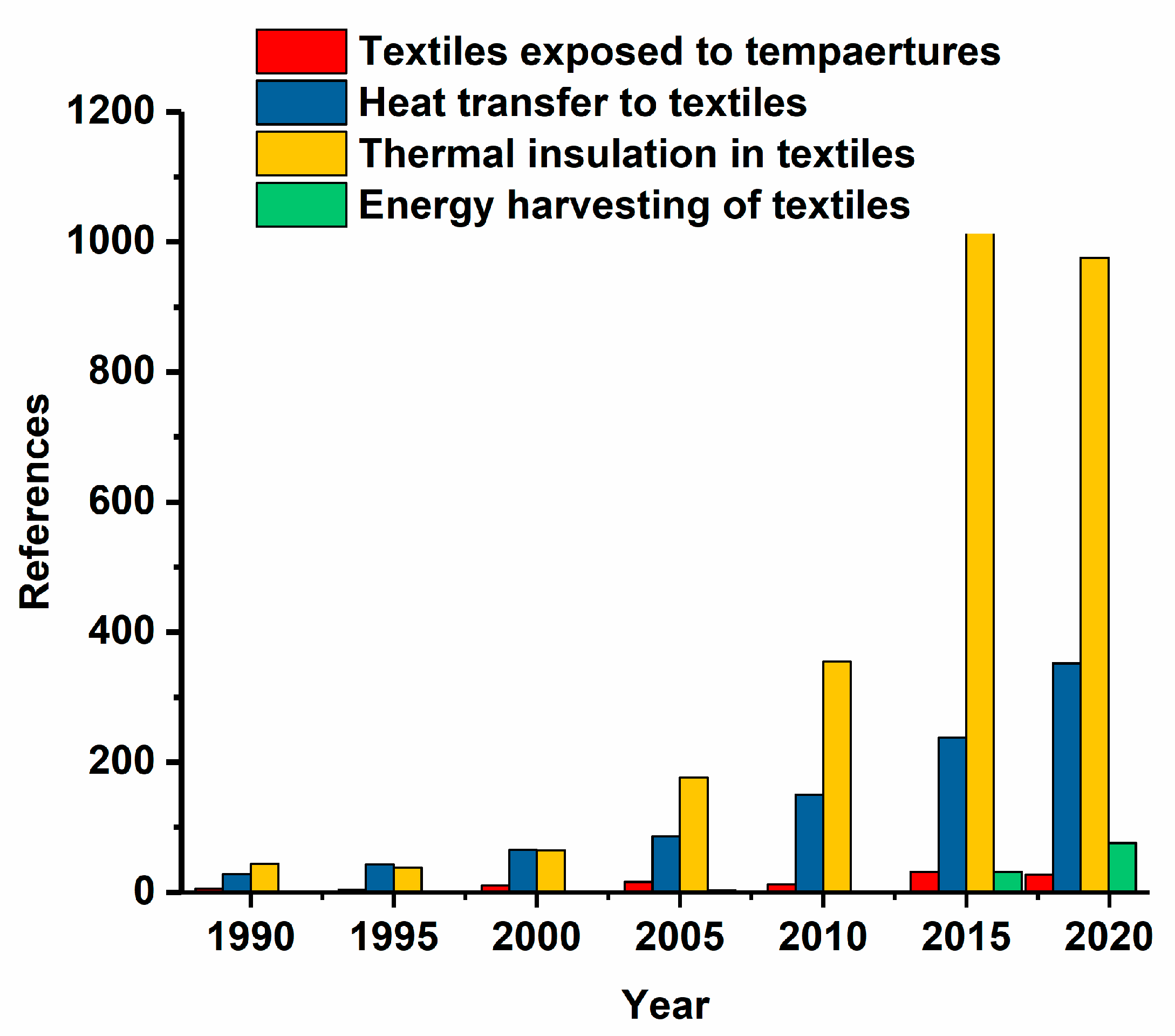You're using an outdated browser. Please upgrade to a modern browser for the best experience.

Submitted Successfully!
Thank you for your contribution! You can also upload a video entry or images related to this topic.
For video creation, please contact our Academic Video Service.
| Version | Summary | Created by | Modification | Content Size | Created at | Operation |
|---|---|---|---|---|---|---|
| 1 | Thomas Bechtold | -- | 1809 | 2022-05-16 09:25:07 | | | |
| 2 | Catherine Yang | Meta information modification | 1809 | 2022-05-16 09:39:30 | | |
Video Upload Options
We provide professional Academic Video Service to translate complex research into visually appealing presentations. Would you like to try it?
Cite
If you have any further questions, please contact Encyclopedia Editorial Office.
Bechtold, T.; Root, W.; Pham, T. Textile-Integrated Thermocouples. Encyclopedia. Available online: https://encyclopedia.pub/entry/22956 (accessed on 25 December 2025).
Bechtold T, Root W, Pham T. Textile-Integrated Thermocouples. Encyclopedia. Available at: https://encyclopedia.pub/entry/22956. Accessed December 25, 2025.
Bechtold, Thomas, Waleri Root, Tung Pham. "Textile-Integrated Thermocouples" Encyclopedia, https://encyclopedia.pub/entry/22956 (accessed December 25, 2025).
Bechtold, T., Root, W., & Pham, T. (2022, May 16). Textile-Integrated Thermocouples. In Encyclopedia. https://encyclopedia.pub/entry/22956
Bechtold, Thomas, et al. "Textile-Integrated Thermocouples." Encyclopedia. Web. 16 May, 2022.
Copy Citation
The integration of conductive materials in textiles is key for detecting temperature in the wearer´s environment. When integrating sensors into textiles, properties such as their flexibility, handle, and stretch must stay unaffected by the functionalization. Conductive materials are difficult to integrate into textiles, since wires are stiff, and coatings show low adhesion. This work shows that various substrates such as cotton, cellulose, polymeric, carbon, and optical fiber-based textiles are used as support materials for temperature sensors. Suitable measurement principles for use in textiles are based on resistance changes, optical interferences (fiber Bragg grating), or thermoelectric effects.
textiles
temperature sensor
conductivity
coatings
1. Concepts of Thermocouple Construction in Textiles
Different thermocouples have been used to measure temperature on woven, non-woven, and knitted textiles.
Figure 1a shows the construction of five thermocouple pairs, which consist of five aluminum conductor strips and a large copper-coated cellulose fabric as a second conductor. Using the copper-coated cellulose textile as a conductor material makes the thermocouple construction more flexible compared to metal wires. The size of the copper-coated cellulose textile can be varied, which allows the positioning of additional thermocouples independently (Figure 1b). This thermocouple construction needs only one conductor as a sensing line. Figure 1c shows a scheme of electron flow in thermoelectric materials. It describes the formation of a temperature difference across a conductor when two junctions (regions) are set to different temperatures. The hot junction (region) generates more free electrons compared to the cold junction. Thus, an electron flow occurs from the hot to the cold junction (region) [1].

Figure 1. The construction of five thermocouple pairs (a), the description of electron flow in thermoelectric materials (b) according to [1], and (c) an electrical circuit. U0 is the reference junction and U1, U2, U3, U4, and U5 are measuring junctions.
Thermocouples were manufactured from conductive poly(3,4-ethylenedioxythiophene), poly(4styrenesulfonate) (PEDOT-PSS) and polyaniline by screen printing on woven cotton textiles [2]. In addition, thermocouples were used to detect resistivity and temperature as a function of time (up to 35 h). Thermocouple assemblies made from PEDOT-PSS and polyaniline showed a Seebeck coefficient of 18 µV/K comparing to 15 µV/K copper polymer assemblies [2]. In a further composition, thermocouples were manufactured from several textiles such as polyacrylonitrile staple fibers, steel staple fibers, a silver-coated polyamide thread, a knitted steel fabric, a woven polyacrylonitrile fabric, and a graphite non-woven textile [3]. The electrical signal generated from thermocouples was used to measure the temperature in the range of 30 to 120 °C [3]. The thermocouple was constructed from L-shaped copper and constantan (Cu/Ni) stripes on polypropylene textile, which were formed by magnetron sputter deposition. Comparison with a commercial thermocouple indicated no difference in temperature detection [4]. Temperature sensors were constructed from copper–nickel wire thermocouples, which were soldered onto a firefighter´s glove [5].
Thermocouple sensors have been manufactured from wires to monitor the thermal situation in socks and gloves [6]. The body heat regulation was monitored by a sensor-based platinum array outside of the garment [6]. Thermocouple sensors were manufactured from copper and constantan wires and were used to detect temperature at 12 different locations in T-shirts [7]. Consequently, a temperature distribution depending on the garment´s size and a distance from the body could be measured [7].
Copper-coated textiles can be used as flexible and lightweight conductor materials in a thermocouple array (Figure 2). The number of conductive lines can be reduced to measuring junctions (red spots), and a reference junction (green spot) can be formed by the attachment of five aluminum conductors (U0, U1, U2, U3, U4, and U5).

Figure 2. Copper-coated cellulose textiles used as a conductor matrix for temperature measurement.
Thermocouples were used to measure heat flux through polyester and polyester/cotton fabric with different weaves (plain, satin, and twill [8]. The fabric´s temperature was detected at thermocouple points, which were related to reference points at room temperature [9].
2. Temperature Sensors and E-Textiles
2.1. Wearable Heaters
Wearable heaters also record temperature profiles as a function of time and can be used in many applications e.g., thermotherapy. In many cases, a combination of heating device and temperature sensor is implement with the aim to control heat generation and to avoid over temperature.
Wearable heaters, which are manufactured from Ag nanofibers (AgNF) on polyethylenterephthalat (PET) and polyimide (PI) by electrospinning, can be affixed to the skin. Heaters were connected at both ends by Cu wires, while the current was applied from the power supply for heat generation. The AgNW (nanowire) heater on the PI substrate shows a considerably stable temperature of 42 °C during a stretching test up to 90%. The use of SiO2 as a passivation layer on AgNW heaters can retard Ag oxidation and allow the detection of temperature up to 250 °C [10].
Wearable and stretchable heaters were made from PEDOT:PSS, polyurethane, and reduced graphene oxide films, which can be applied in thermotherapy. They imparted an electrical conductivity of 18.2 Scm−1 and withstood elongation up to 530%. The temperature distribution of composite films was measured in the middle when voltage was applied by two copper wires [11]. Heaters were also manufactured from Ag NWs (nanowires), PEDOT:PSS, and PET materials, which withstood a temperature of 120 °C [12]. Stretchable heaters were also fabricated from graphene fiber (GF). The GFs were embroidered into cotton fabric and withstood finger bending and wrist movement. The temperature was recorded by an infrared camera [13].
Flexible and stretchable heaters were manufactured from carbon nanotubes (CNT), copper foil, and silicon elastomers [14]. Flexible and stretchable heaters were constructed from copper-coated polyacrylonitrile fibers, which can operate at temperature up to 328 °C. These heaters were manufactured from copper-coated fibers by electroplating on glass substrates [15]. Flexible heaters were manufactured from nylon-coated fabric, which was coated with Ag NWs and rubber shape memory polymer during dip-dry and spray coating. Bending, rolling, gripping, and rubbing did not show any damage of the heaters [16].
Stretchable and conductive heaters were manufactured from poly(3,4-ethylenedioxythiophene):poly(4-styrenesulfonate) (PEDOT:PSS) and sodium dodecyl sulfate on cotton and polyurethane fabrics by dip coating. The temperature changes were investigated with a digital thermometer while IR images were recorded with an infrared camera [17]. Stretchable heaters were used in thermotherapy, which were produced from styrene–butadiene–styrene and Ag NW substrates. These substrates formed a mesh by thermal welding and heat treatment [18].
In thermotherapy, stretchable heaters could increase the blood flow near the wrist. The heaters were manufactured from kirigami–aluminum paper, thin elastomers of silicon polymer, and polyethylene terephthalate films, and these could be stretched to 400% at a temperature of 40 °C [19]. Stretchable heaters were also manufactured from copper wire/alumina/polyimide composites. These composites showed a high visible light transmittance up to 91.4% and reached temperatures up to 300 °C. They withstood 100 stretching and relaxation cycles at 30% strain [20]. Stretchable and wearable heaters were manufactured from CuZr and poly(dimethylsiloxane) (PDMS), which could be used at 70% elongation. They were used as portable patch units on human hands and reached temperatures up to 50 °C [21]. Stretchable heaters produced from Ag nanowires and polydimethylsiloxane (PDMS) substrates were used to heat human skin. A constant temperature of 50 °C could be observed up to 40% strain [22].
Temperature measurements were conducted by conductive substrates in textiles, which formed sensors and flexible electronic structures. Flexible electronic circuits were made by coating 35 nm Cr substrates by photolithography and 25 nm Al2O3 substrates by atomic layer deposition on Kapton E materials. Electronic circuits were integrated through the commercial weaving process integrated in textiles. They formed woven temperature sensors, which operated in the range of 20 to 100 °C [23]. Flexible and conductive polyester fabrics were manufactured from ploly(3,4-ethylenedioxythiophene):poly(4-styrenesulfonate) (PEDOT:PSS), 15 wt % graphite, and dimethyl sulfoxide mixtures by coating. These fabrics were used as thermoelectric (TE) textiles, which measured temperatures up to 398 K and showed a power of 0.025 µWm−1K−2 [24].
Bimodal sensors were used to detect temperature and pressure simultaneously by making use of a piezo-thermoresistive organic conductor and a dialectic substrate. The dielectric substrate was composed of poly(vinylidenefluoride-trifluoro-ethylene) and BaTiO3 nanoparticles. When the human finger pressed on the bimodal sensor, a pressure of up to 0.03 N/mm2 and a temperature of up to 35 °C were measured [25].
2.2. Sensor Integration in Textiles
Figure 3 shows eight possible application areas, where the integration of sensors in textiles is of interest. The temperature detection already has been investigated in functional garments, sport garments, the automobile industry, medical institutions, security packaging, and the fashion industry. The future seamless compatibility of sensors with textiles will increase their wearing comfort and lead to prototypes, which can be produced on an industrial scale.

Figure 3. Eight areas for sensor integration in textiles in November 2019.
2.3. Body Sweat/Moisture and Heat Transfer in Textiles
Besides sweat, water content influences the wearer´s comfort in textiles. The presence of water in textiles increased the mass and reduced the heat transfer in sport and protective clothing [26]. Textiles with high water vapor permeability can transfer moisture from the skin through the textile into the environment, which continuously keeps the human body in thermal equilibrium.
Therefore, the transmission of water vapor was recorded as a function of air temperature and relative humidity in polytetrafluoroethyle (PTFE) laminated with nylon fabric, woven cotton fabric, polyester fabric (laminated with polyurethane), and hybrid PTFE membranes. The transmission of water vapor was high at high air temperature and low relative humidity [27].
In addition to the body motion, health condition can be monitored by using biocompatible and stretchable carbon nanotube-based electrodes (CNTs), which are used to detect sweat [28]. Sweat also can be detected by a wearable colorimetric pH sensor, which provides information on the metabolic state and activity of a patient. The collection of sweat in T-shirts was investigated on textile biosensors in health management [29].
Figure 4 shows the increase in the literature on concepts, which are related to thermal effects and energy generation. The concepts are highlighted with green for “thermal insulation in textiles”, yellow for “heat transfer in textiles”, blue for “textiles exposed to temperature”, and red for “energy harvesting in textiles”. Energy harvesting in textiles is a new fast growing field. Its role will be significant with the development of miniaturized temperature sensors that seamlessly adapt to textiles.

Figure 4. Temperature measurement in textiles and their use for energy generation.
The thermoelectric effect also can be used to generate electrical energy from temperature differences between a human body and the environment.
As an example, the heat of the human body was used to power a flexible thermoelectric glass fabric, which was formed from eight thermocouples consisting of Bi2Te3 and Sb2Te3 films. It indicated an output voltage of 28 mWg−1 (ΔT = 50 K) [30]. The temperature of the human body was detected by polyethylene (PE) and polyethylene oxide (PEO) substrates, which were melt mixed with 40 wt % Ni microparticles. The PEO/PE matrix treated with 40 wt % Ni showed sensitivity as temperature sensors of 0.3 V/°C in the range of 35 to 42 °C compared to 50 wt % [31]. The skin temperature was measured by an embedded wire sensor, which was composed of aluminum carbon epoxy composites. These composites detected a higher skin temperature compared to multiple thermistors [32].
References
- Lee, H.S. Thermal Design: Heat Sinks, Thermoelectrics, Heat Pipes, Compact Heat Exchangers, and Solar Cells; John Wiley & Sons: Hoboken, NJ, USA, 2010; ISBN 9780470496626.
- Seeberg, T.M.; Røyset, A.; Jahren, S.; Strisland, F. Printed organic conductive polymers thermocouples in textile and smart clothing applications. In Proceedings of the 2011 Annual International Conference of the IEEE Engineering in Medicine and Biology Society, Boston, MA, USA, 30 August–3 September 2011; pp. 3278–3281.
- Ziegler, S.; Frydrysiak, M. Initial research into the structure and working conditions of textile thermocouples. Fibres Text. East. Eur. 2009, 77, 84–88.
- Depla, D.; Segers, S.; Leroy, W.; Van Hove, T.; Van Parys, M. Smart textiles: an explorative study of the use of magnetron sputter deposition. Text. Res. J. 2011, 81, 1808–1817.
- Mrugala, D.; Ziegler, F.; Kostelnik, J.; Lang, W. Temperature Sensor Measurement System for Firefighter Gloves. Procedia Eng. 2012, 47, 611–614.
- Dias, T. Electronic Textiles: Smart Fabrics and Wearable Technology, 1st ed.; Dias, T., Ed.; Woodhead: Oxford, UK, 2015; ISBN 9780081002018.
- Takatera, M.; Uchiyama, E.; Zhu, C.; Kim, K.; Ishizawa, H. Effect of air gap on apparent temperature of body wearing various sizes of T-shirt. IOP Conf. Series: Mater. Sci. Eng. 2017, 254, 182012.
- Gidik, H.; Bedek, G.; Dupont, D.; Codau, C. Impact of the textile substrate on the heat transfer of a textile heat flux sensor. Sensors Actuators A: Phys. 2015, 230, 25–32.
- Zhu, C.; Takatera, M. A new thermocouple technique for the precise measurement of in-plane capillary water flow within fabrics. Text. Res. J. 2014, 84, 513–526.
- Jang, J.; Hyun, B.G.; Ji, S.; Cho, E.; An, B.W.; Cheong, W.H.; Park, J.-U. Rapid production of large-area, transparent and stretchable electrodes using metal nanofibers as wirelessly operated wearable heaters. NPG Asia Mater. 2017, 9, e432.
- Zhou, R.; Li, P.; Fan, Z.; Du, D.; Ouyang, J. Stretchable heaters with composites of an intrinsically conductive polymer, reduced graphene oxide and an elastomer for wearable thermotherapy. J. Mater. Chem. C 2017, 5, 1544–1551.
- Ji, S.; He, W.; Wang, K.; Ran, Y.; Ye, C. Thermal Response of Transparent Silver Nanowire/PEDOT:PSS Film Heaters. Small 2014, 10, 4951–4960.
- Wang, R.; Xu, Z.; Zhuang, J.; Liu, Z.; Peng, L.; Li, Z.; Liu, Y.; Gao, W.; Gao, C. Highly Stretchable Graphene Fibers with Ultrafast Electrothermal Response for Low-Voltage Wearable Heaters. Adv. Electron. Mater. 2017, 3, 1–7.
- Li, Y.; Zhang, Z.; Li, X.; Zhang, J.; Lou, H.; Shi, X.; Cheng, X.; Peng, H. A smart, stretchable resistive heater textile. J. Mater. Chem. C 2017, 5, 41–46.
- Jo, H.S.; An, S.; Lee, J.-G.; Park, H.G.; Al-Deyab, S.S.; Yarin, A.L.; Yoon, S.S. Highly flexible, stretchable, patternable, transparent copper fiber heater on a complex 3D surface. NPG Asia Mater. 2017, 9, e347.
- Kim, C.-L.; Lee, J.-J.; Oh, Y.-J.; Kim, D.-E. Smart wearable heaters with high durability, flexibility, water-repellent and shape memory characteristics. Compos. Sci. Technol. 2017, 152, 173–180.
- Yeon, C.; Kim, G.; Lim, J.W.; Yun, S.J. Highly conductive PEDOT:PSS treated by sodium dodecyl sulfate for stretchable fabric heaters. RSC Adv. 2017, 7, 5888–5897.
- Choi, S.; Park, J.; Hyun, W.; Kim, J.; Kim, J.; Lee, Y.B.; Song, C.; Hwang, H.J.; Kim, J.H.; Hyeon, T.; et al. Stretchable Heater Using Ligand-Exchanged Silver Nanowire Nanocomposite for Wearable Articular Thermotherapy. ACS Nano 2015, 9, 6626–6633.
- Jang, N.-S.; Kim, K.-H.; Ha, S.-H.; Jung, S.-H.; Lee, H.M.; Kim, J.-M. Simple Approach to High-Performance Stretchable Heaters Based on Kirigami Patterning of Conductive Paper for Wearable Thermotherapy Applications. ACS Appl. Mater. Interfaces 2017, 9, 19612–19621.
- Li, P.; Ma, J.; Xu, H.; Xue, X.; Liu, Y. Highly stable copper wire/alumina/polyimide composite films for stretchable and transparent heaters. J. Mater. Chem. C 2016, 4, 3581–3591.
- An, B.W.; Gwak, E.J.; Kim, K.; Kim, Y.C.; Jang, J.; Kim, J.Y.; Park, J.U. Stretchable, Transparent Electrodes as Wearable Heaters Using Nanotrough Networks of Metallic Glasses with Superior Mechanical Properties and Thermal Stability. Nano Lett. 2016, 16, 471–478.
- Hong, S.; Lee, H.; Lee, J.; Kwon, J.; Han, S.; Suh, Y.D.; Cho, H.; Shin, J.; Yeo, J.; Ko, S.H. Highly Stretchable and Transparent Metal Nanowire Heater for Wearable Electronics Applications. Adv. Mater. 2015, 27, 4744–4751.
- Cherenack, K.; Zysset, C.; Kinkeldei, T.; Münzenrieder, N.; Tröster, G. Woven Electronic Fibers with Sensing and Display Functions for Smart Textiles. Adv. Mater. 2010, 22, 5178–5182.
- Du, Y.; Xu, J.; Wang, Y.; Lin, T. Thermoelectric properties of graphite-PEDOT:PSS coated flexible polyester fabrics. J. Mater. Sci. Mater. Electron. 2017, 28, 5796–5801.
- Tien, N.T.; Jeon, S.; Il Kim, D.; Trung, T.Q.; Jang, M.; Hwang, B.U.; Byun, K.E.; Bae, J.; Lee, E.; Tok, J.B.H.; et al. A Flexible Bimodal Sensor Array For Simultaneous Sensing of Pressure and Temperature. Adv. Mater. 2014, 26, 796–804.
- Neves, S.; Campos, J.; Mayor, T.S. On the determination of parameters required for numerical studies of heat and mass transfer through textiles – Methodologies and experimental procedures. Int. J. Heat Mass Transf. 2015, 81, 272–282.
- Huang, J.; Chen, Y. Effects of Air Temperature, Relative Humidity, and Wind Speed on Water Vapor Transmission Rate of Fabrics. Text. Res. J. 2010, 80, 422–428.
- Yao, S.; Zhu, Y. Nanomaterial-Enabled Stretchable Conductors: Strategies, Materials and Devices. Adv. Mater. 2015, 27, 1480–1511.
- Luprano, J. Bio-Sensing Textile for Medical Monitoring Applications. Adv. Sci. Technol. 2008, 57, 257–265.
- Kim, S.J.; We, J.H.; Cho, B.J. A wearable thermoelectric generator fabricated on a glass fabric. Energy Environ. Sci. 2014, 7, 1959.
- Jeon, J.; Lee, H.B.R.; Bao, Z. Flexible Wireless Temperature Sensors Based on Ni Microparticle-Filled Binary Polymer Composites. Adv. Mater. 2013, 25, 850–855.
- Ueno, S.; Sawada, S. Correction of the evaporative resistance of clothing by the temperature of skin fabric on a sweating and walking thermal manikin. Text. Res. J. 2012, 82, 1143–1156.
More
Information
Subjects:
Materials Science, Textiles
Contributors
MDPI registered users' name will be linked to their SciProfiles pages. To register with us, please refer to https://encyclopedia.pub/register
:
View Times:
1.4K
Revisions:
2 times
(View History)
Update Date:
16 May 2022
Notice
You are not a member of the advisory board for this topic. If you want to update advisory board member profile, please contact office@encyclopedia.pub.
OK
Confirm
Only members of the Encyclopedia advisory board for this topic are allowed to note entries. Would you like to become an advisory board member of the Encyclopedia?
Yes
No
${ textCharacter }/${ maxCharacter }
Submit
Cancel
Back
Comments
${ item }
|
More
No more~
There is no comment~
${ textCharacter }/${ maxCharacter }
Submit
Cancel
${ selectedItem.replyTextCharacter }/${ selectedItem.replyMaxCharacter }
Submit
Cancel
Confirm
Are you sure to Delete?
Yes
No




